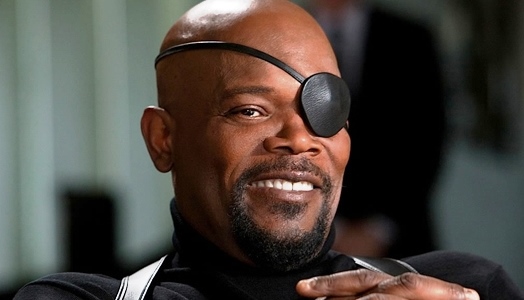
Samuel L. Jackson starring as a racebent Nick Fury
You can count on it.
Whenever a major media outlet posts an article about the problem of whitewashing in mainstream entertainment, there is a certain response that’s guaranteed to appear in the comments thread.
Well it’s no different than casting a person of colour in a role meant for a white person, so if they had a black James Bond, it’d be equally racist and offensive.
That train, in the words of the mighty Chris Rock, is never late.
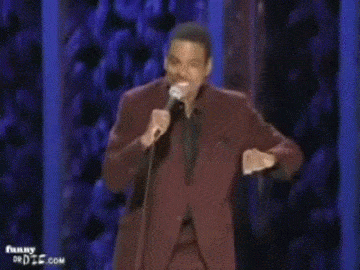
It is, however, an argument that’s seriously going nowhere.

This is because although both cases may involve a character’s race being changed, the motivation, interpretation, and impact of racebending compared to whitewashing couldn’t be more different.
What I mean by “racebending”
The term “racebending”, according to Wikipedia, originated during protests over whitewashing in the 2010 film The Last Airbender – a remake of the TV series Avatar: The Last Airbender, which featured characters of East Asian appearance.
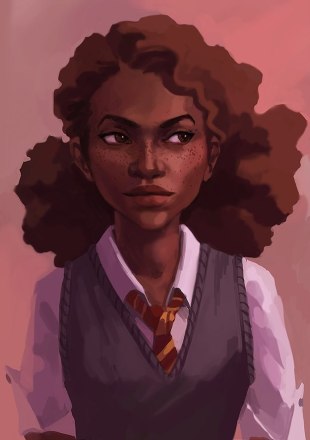
Fan art of a racebent Hermione Granger
(The term itself makes reference to the Avatar characters’ ability to manipulate or “bend” the classical elements of earth, air, fire, and water.)
Media activists often use “racebending” interchangeably with “whitewashing”. However, in some subversive media communities (e.g. fandom), I’ve also seen “racebending” used only to describe when a perceived white character is changed to a person of colour, such as fan representations of Harry Potter’s Hermione Granger as black.
Used in this way, both the term and the act it describes are given a positive definition – one that modifies normative practices and prioritizes diverse representation in mainstream media. It is this particular interpretation of racebending that I refer to in my usage of the word throughout this post.
It’s all about context
The most important thing to consider when examining how whitewashing and racebending differ is that the balance of power between the two acts is not the same.
The fact remains that mainstream media is overwhelming in the hands of white people (white men, to be even more precise).
Backed by huge studios with even larger budgets, white men make all the decisions about what gets made and what doesn’t. About who gets cast and who doesn’t.
They also control the distribution and advertising, which is what gets movies and shows in front of an audience. This is something that’s a constant struggle for independent filmmakers trying to create works that exist outside of the status quo.
The tremendous power wielded by film studios and distributors further exists within a society that itself is patriarchal, favours whiteness, and frankly often has a hard time seeing people of colour as people at all.
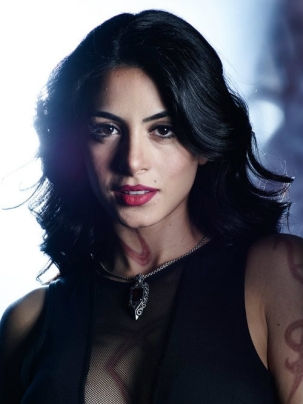
Actress Emeraude Toubia as Isabelle Lightwood
This broader context in which mainstream media both exists and is received makes it impossible for whitewashing and racebending to be one and the same.
We are all influence by media; our culture is saturated with it to the point that the only way to escape it is to go hide under a rock.
Representation in the media matters, but with so few complex, non-stereotypical examples of people of colour in media, representation matters that much more. For this reason, taking one of the few stories explicitly starring people of colour and casting them as white leaves people of colour poorer in our media portrayals as a result.
It is genuinely harmful to have even one less representation of people of colour in a society that shapes so much of its perception and acceptance of people different from them through visual media.
Casting a black actor as James Bond, or a Mexican-Lebanese actress as Isabelle Lightwood on TV’s Shadowhunters, or even a black actor as the Nordic god Heimdall does not have this same effect.
While one might not personally like the idea of a black Bond, having one is not detrimental to the perception of white people in society because there are thousands – tens of thousands – of other portrayals of them.
Another important point about racebending is that it’s often only due to society’s favouritism for whiteness that certain characters are cast as white to begin with.
This is especially prevalent in book adaptations that make it to the silver screen.
Oftentimes in books, a character is described in very vague terms, with only the cover art commissioned by the white-favouring marketing department making a definitive pronouncement on that character’s race.
Hermione is described as having big teeth and frizzy hair. The Hunger Games’ Katniss Everdeen is said to have olive skin (which is often marketing code for not white, yet not blatantly so, so as not to make the story “unrelatable”).
I’ve never read a James Bond novel so I don’t know if Bond is canonically white or was merely interpreted in that way.
In movie scripts, the hero’s race is often not specified at all, but the casting call that goes out is only for white actors. In this case, changing a character from white to non-white isn’t racebending at all because the original character was only read as white.
Such is our society that in the absence of definitive racialized descriptors, everyone is read as white – the supposed default human race.
Layers of artistry
Even if a canonically white character is re-cast as a person of colour, I’d still argue that what is lost is more than made up for by what’s gained, particularly compared to when a person of colour is whitewashed.
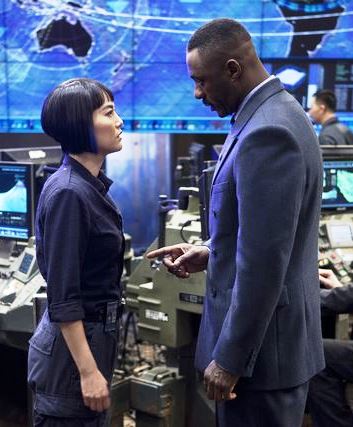
Stacker Pentecost and his adopted daughter, Mako
Mainstream media, regardless of the time and place it depicts, is an artifact of modern society. It is through our experiences in mainstream society that we relate to media and apply meaning to it.
People of colour have vastly different experiences within modern, white-favoured society than do white people. The echo of these experiences follow us around like a shadow, and even when not the explicit subject of the story, add subtleties to the narrative compared to those of a white actor.
An example of this is the sci-fi monster movie Pacific Rim, in which the role of Stacker Pentecost –a military general, originally intended for Tom Cruise – was ultimately filled by Idris Elba.
In the movie’s backstory, Pentecost years ago rescued a young, Japanese girl named Mako from one of the monsters. Mako lost her parents in this attack so Pentecost ended up adopting her.
Both in movies and in real life we often see stories of white people adopting non-white children. When it comes to black people, we’re shown this much less frequently, to the point that its inclusion in Pacific Rim added considerable interest to Pentecost and Mako’s father-daughter relationship.
At the start of the movie, Mako is already an adult, but I found myself wonder about what the family life of this black man and his Japanese daughter had been like all those years – how they had navigated their cultural differences. How society had perceived them as they worked to build a new life together.
To be clear, I’d wonder the same things had Pentecost been played by a white actor. But it instead being Elba added another layer of richness to the relationship that to me more than compensated for the absence of Tom Cruise’s undeniably thrilling star power.
Meanwhile, I can’t think of a single artistic attribute that was gained by casting white actors to play Ancient Egyptian characters – including Moses and Ramses the Great – in the movie Exodus: Gods and Kings.
In this way, racebending is transformative in a way that whitewashing generally isn’t. To erase a character’s colour is indeed, literally, to wash away the colour – to make the story more homogenized and conventional.
Which is why we need, not only more racebending in mainstream media, but also more races represented, more original roles for people of colour, and more colour-blind casting to begin with to make racebending less of a necessity.
What are your thoughts on whitewashing versus racebending mainstream media? Let me know in the comments.

I really can’t wait until the demographics in this country make NON-white the majority. The power structure of mostly white males will still hang on for a while, but we’ve already had a half-black president (and a beautiful black First Lady), and are poised to have a woman (okay, she’s white, but, for a rich woman, is going to do a lot if not stonewalled as Obama was by Congress) for president next – against what the white male Republican establishment succeeded in selecting for a candidate (what were they thinking?).
Keep pushing, everyone – just as my disability is finally starting to get the tiniest crumbs of attention from the NIH, the avalanche has already started down deep on lots of other things.
I STILL want to mention that the power of fiction isn’t being used enough, for either. The more black characters (and Asian characters, and women characters, and…) there are in movies, the more the public goes, “Oh, okay. Character X is black.” I think we need a lot more, and a lot more mixtures – too often the result has been to put a black actor as the chief, instead of as a functioning member of the ensemble, and that skips over the part where that characters was the best of his/her cohort – the part that is never shown – to end up as the chief, or the head of the department, or whatever. And EVERY other color and color combination.
If the genetics wouldn’t work out – have the parents adopt.
The play I wrote, Tangled Webs, about two women and the biological daughter of one (with the deceased father) being brought up without her knowing she is adopted, by the other, who was his wife. I intend, if it is ever produced, to suggest that choosing the race/ethnicity of the father could make all kinds of combinations for the women and the daughter possible, and that they should be considered equally before casting.
A diverse society would be a blessing on our country and our world. To the loss of a few.
LikeLike
Apparently, 2042 is the year it’s predicted that white people will be the statistical minority in the US.
Hopefully, media representation will improve a lot sooner than that. What you mention about the black actor being cast as the chief reminds me of what I learned while writing about whitewashing last week. In defence of their actions – particularly the director of Star Trek: Into Darkness, who whitewashed the role of a key POC villain with Benedict Cumberbatch – white people often express discomfort portraying POC as the bad guy.
I can’t speak for everyone, but it’s not that POC only want to be good, shiny, goody-goody perfect characters. Rather, we want to not be portrayed in stereotypes. A villain, so long as it’s a complex one with compelling and believable motivations, would be a fine role for a person of colour. I remember when the movie Training Day came out, Denzel Washington expressed how much he enjoyed playing the bad guy – a chance to try something different.
Stereotypes abound in Hollywood and plague all marginalized groups. There really needs to be more open casting and colour-blind casting. A diverse society would definitely be a blessing. But getting to that point truly relies upon the impact of mainstream media (sad, but true). Most people need to first see it before they can either believe it or accept it.
LikeLiked by 1 person
I remember Training Day – and American Gangster – and still have trouble seeing black actors as villains because precisely of the stereotypes.
Which is a little better than it was, but not nearly enough.
Diversity in roles means you can’t figure out whether the character is good or bad by looking at his/her hat – or skin.
LikeLike
I definitely agree that colour-coding good and bad characters is pretty much the opposite diversity. I don’t like it when black and Latino actors are cast as random thugs just to serve as a convenient (and temporary) obstacle by which the white hero can further demonstrate his heroism. However, imagine a richly-drawn villain like the Joker or Jack Torrance who was cast with a person of colour. That would be incredible. Everyone remembers a compelling villain. Something like that could really launch an actor’s career and do much to help create those non-white A-listers that are so sadly lacking in Hollywood.
LikeLiked by 1 person
There are SO many movies made – you think they’d be able to give us a diverse model. Instead, every single one goes with the same stereotype.
LikeLiked by 1 person
As a cisgender white female I’ve long bemoaned the lack of racial diversity in tv and film, particularly here in Australia, where tv producers seem to think we only want to see young, white, blond, buff humans. It’s starting to improve but there’s a long way to go! Also, given that I don’t know the backstory of many shows (their comic book equivalent, say) I literally don’t care if racebending is involved if it enables racial diversity on our screens and in our stories.
LikeLike
There are so many diverse stories out that would benefit all of us by being told. I don’t understand how some many other people aren’t also bored with the same old, same old. I literally struggle to differentiate between the current crop of young, white, sandy-haired leading men of Hollywood.
LikeLiked by 1 person
Pingback: “What if a white guy played Black Panther?: The Fake Concern of Fake Geek Guys — Stitch’s Media Mix – Geeking Out about It
As a person who would be described as either afro Latino or Mulato, or biracial. I’m not always in love with these swaps. I am a comic purist by nature and feel many times these tend to not have the same authentic feel to the source material because of all the changes in character background and origin when this happens. I owned a comic store I’m probably jaded. Also I don’t feel like I am missing out or being underrepresented. I am just finally getting to enjoy a story I’ve only read in comics depicted on the screen. can’t for the life of me understand why Hollywood is so lazy to not just make NEW characters and paste whatever ethnicity you want on them and make them as persecuted as possible.
LikeLike
I don’t always love them either and agree racebending is often done as an attempt for corporations to “virtue signal” rather than out of a genuine desire to address the need for more BIPOC characters on screen.
But you sort of answer your own question as to why Hollywood doesn’t embrace original characters – laziness. Also that same lack of genuine belief that representation is important. Also capitalism, because new characters and new stories require marketing budgets to make viewers aware and get them excited, and Hollywood would rather spend the least amount of money and expend the least amount of effort. That means recycling the same old stories over and over again, but this time with a tiny splash of colour.
As to your not feeling like you’re missing out by not being underrepresented, that may indeed be the case. No one can speak for you and your experience but you. I wasn’t well represented in media when I was young either, and I turned out more or less okay I think. But that’s just one perspective. Many people speak of having wished to see characters who looked like them when they were young. As well, who knows how you and I might be different today if we had been represented. For the first time ever BIPOC youth have the opportunity to enjoy some representation in mainstream Western media, which could prove quite formative for them. More to the point, though, if it can be done why shouldn’t it so that our media matches the racial diversity that exists in the real world?
LikeLike